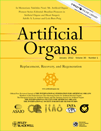Coronary Vascular Resistance Increases Under Full Bypass Support of Centrifugal Pumps—Relation Between Myocardial Perfusion and Ventricular Workload During Pump Support
Presented in part at the 2010 ESAO Meeting held September 8–12, 2010 in Skopje, Macedonia.
Abstract
Coronary circulation is closely linked to myocardial oxygen consumption (MVO2), and previous reports have suggested decreased coronary flow (CoF) under left ventricular assist device support. Decreased CoF itself under support is not unfavorable because the native heart can be well unloaded and myocardial oxygen demand is also decreased. There should be an autoregulatory system that would maintain optimal CoF according to oxygen demand; however, the detailed mechanism is still unclear. The aim of the current study is to evaluate the effect of centrifugal pumps on CoF under varied bypass rates in relation to left ventricle workload. A centrifugal pump, EVAHEART (Sun Medical Technology Research Corporation, Nagano, Japan), was installed in an adult goat (n = 10, 61.3 ± 6.5 kg). We set up the following conditions, including Circuit-Clamp (i.e., no pump support), 50% bypass, and 100% bypass. In these settings, CoF, MVO2, pressure–volume area (PVA), and coronary vascular resistance (CVR) were measured. In 100% bypass, CoF, MVO2, and PVA were all decreased significantly from clamp. While in 50% bypass, CoF and MVO2 decreased from clamp, but not PVA. There was a significant 40% increase in CVR in 100% bypass from clamp. This CVR increase in 100% bypass was possibly due to mechanical collapse of coronary vascular bed itself by pump support or increased vascular tone through autoregulatory system. In clinical settings, we should adjust optimal pump speed so as not to cause this vascular collapse. However, to clarify autoregulatory system of the coronary perfusion, further investigation is ongoing in ischemic and heart failure models.




